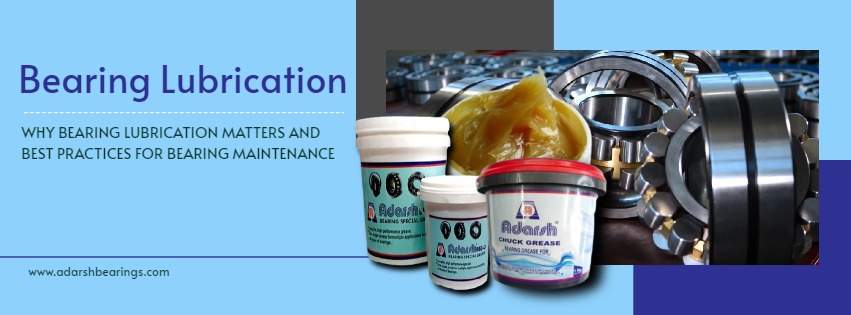Bearings are used in a wide range of tools and machinery, including motors, pumps, fans and conveyors, plus, they play an important role in supporting rotating shafts and reducing friction between moving parts. Bearing lubrication is the key to keep bearings fit for use anytime, and thus is a critical aspect of machine maintenance and operation.
It is important to consider a number of factors in order to select the right type of bearing for a specific application. Load capacity, speed, temperature and lubrication requirements are the highlight factors. For example, if a bearing is going to be used in an application involving high speed, it has to be able to handle the increased heat generated by the friction that the rolling elements and the races generate.
Lubrication is another point that one must never miss while selecting a bearing. While the purpose of bearings is to reduce friction between the individual components of a machine, the purpose of lubrication is to reduce the friction and wear on the parts of the bearing as well as the other parts. That improves the performance of the machinery in question. Oil, grease and solid lubricants are a few among the several lubricants that can be used. In this article, we will go through some of the most important highlight points of bearing lubrication, including the best grease for ball bearings and best grease for roller bearings. Keep reading to find out!
Why Bearing Lubrication Matters?
A variety of stress factors, such as high temperatures, heavy loads and high speeds put immense load on bearings during operation. It is the job of lubrication to help reduce friction between the bearing and the rotating shaft, thus reducing wear and tear on both the bearing as well as the shaft. Friction generated during operation also gives rise to heat, which has the capability to cause excessive wear and premature failure of the bearing unless proper lubrication is done.
High temperature grease solves this problem by keeping the bearing temperature low. Not only this, but proper lubrication can also help in preventing contaminants such as dirt, dust and moisture to cause corrosion and damage to the bearing. It creates a barrier between the bearing and the outside environment, protecting the bearing from damage.
Best Practices For Bearing Lubrication Maintenance
Use the Right Lubricant
Different kinds of bearings require different types of lubricants, such as oil or bearing grease. The operating conditions of the equipment, such as temperature, load and speed should be taken into account while selecting the lubricant. You can contact all prominent bearing grease suppliers to find out the right type of bearing grease for you.
Note: Remember that ball bearing lubrication and roller bearing lubrication are meant for separate kinds of bearing, and do not have the same chemical composition.
Monitor Lubricant Levels
It is necessary to regularly check lubricant levels and top them up as necessary to ensure that the bearing remains properly lubricated to prevent bearing failure.
Establish a Lubrication Schedule
To check for problems relating to bearings and lubrication from time to time, it is important to establish a schedule for lubrication based on the operating conditions of the equipment. Be sure to include regular intervals for lubricant changes and bearing inspections in the schedule.
Use Proper Lubrication Techniques
It must be ensured that the lubricant reaches all parts of the bearing. This can be done by using a grease gun or oiler to apply lubricant, or by using an automatic lubrication system to distribute lubricant evenly.
Keep the Environment Clean
Infiltration of dirt, dust and moisture into bearings is one of the main reasons for bearing failure. To prevent this, lubrication must be done only in clean and dry areas to prevent such contaminants from entering the bearing and causing damage.
Inspect Bearings Regularly
Regular visual and technical bearing inspections by an authorised engineer can identify potential risk-signs before it is too late to repair them. Signs of wear such as discolouration or pitting must be identified and lubricant levels should be checked.
Conclusion
The longevity and optimum performance of machinery and equipment is highly reliant on its proper lubrication, and neglecting this aspect can prove to be a costly mistake. By following the 6 simple steps of best practices for maintenance of bearings, you can ensure your equipment operates reliably and efficiently for years. You can also contact a grease manufacturer in India if you wish to know more in-depth and technical details about bearing grease.

